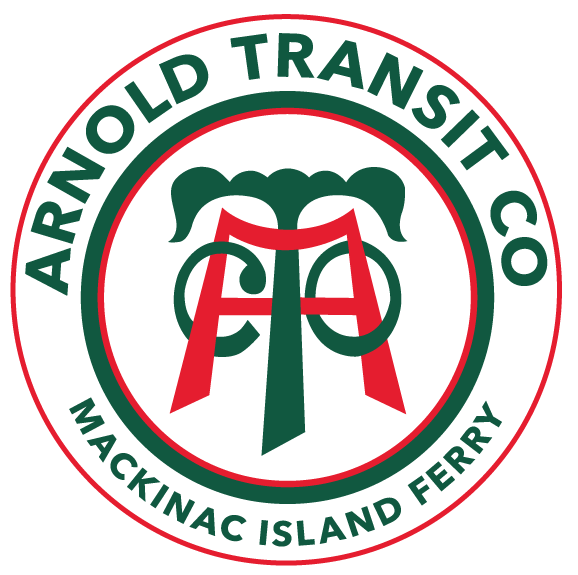
ARNOLD HISTORY
Our story begins in 1878
Imagine Mackinac Island without the stately Grand Hotel gracing its bluff. No fudge shops. No streams of bicyclists pedaling along a smooth, paved highway. But you can see horses pulling wagons. People walking down from the white fortress, Fort Mackinac, to greet boats coming into the harbor. There are fishermen lining their wet, shimmering catches across wooden planks. And a gull swoops to snatch a discarded fish head mid-air.
Mackinac Island was a different place, and yet the same, when George T. Arnold and his partners, Francis B. Stockbridge and O.Q. Johnson founded the Mackinac Lumber Company. The timing couldn’t have been better. People living and working in the straits talked excitedly about growth – new business ventures, shops, homes along the bluffs of Mackinac Island and the shores of Lake Michigan and Lake Huron. Arnold knew he would need reliable marine transportation to help them build their dreams. So he formed, with L.B. Coats, the Arnold and Coats Ferry Line.
The oldest, longest operating ferry line on the straits
One of the first Arnold boats was a coal-fired side-wheeler. Other steamers stretched 100 feet to 200 feet long, compared today’s 80-90-foot ferries.
In 1886 Arnold acquired the Algomah (built in 1881). It steamed across to the island until the 1930s. Its steam engine was considered unique enough to find a permanent home at historic Greenfield Village in Dearborn, Michigan. The Algomah II went into service in 1936. It was 156 feet long, carried up to 450 passengers and required a crew of 20 people to get it from shore to shore! Today’s ferries only require a crew of four.
A vacation from city life
When the railroads from Chicago and Detroit reached Mackinaw City, life in the straits changed almost overnight. First came the building of the Grand Hotel, finished in 1887. Other hotels on the island and mainland followed. Beautiful summer cottages were built along Mackinac’s great bluffs. More stores popped up along its streets. Renowned people like the Strohs (brewery), Cudahys and Armours (meat packers) and Palmers (Chicago real estate) either owned cottages on the island or came for long stays at one of the island’s hotels, increasing this resort’s popularity in the Midwest.
To accommodate the growth, Arnold bought out his partners and incorporated the company in 1890. He bought more steamers for his fleet. These steamers mirrored the magnificent passenger boats sailing out of Detroit, Chicago and Buffalo, New York. With the trip across taking nearly an hour, passengers walked up and down the boat’s gleaming staircase, lounged on cane-bottom deck chairs and peered through observation windows at the big steam engines at work.
The line stays connected
George Arnold died in 1921. His wife, Susan, continued running the ferry service, but asked that the company auditors, Price Waterhouse, provide assistance. The renowned accounting firm sent a young accountant, Otto Lang, to help manage the Arnold Line. Mrs. Arnold also asked a local attorney, Prentiss M. Brown, Sr. to assist with the handling of the boat company’s affairs.
When Mrs. Arnold died a few years later, the Arnold heirs were ready to sell their interests in the ferry line. Lang and Brown wanted to keep the entire operation together. They bought out the Arnold interests and guided it through times of boom, depression and World War II. Eighty years later, Prentiss Brown’s sons, daughters and grandchildren still own and operate the company.
A new wave of boats
Post-World War II, the Arnold Ferry Line faced its first major competition. Determined to be the leader, Lang and Brown replaced their labor-intensive steamers with diesel-powered boats, operated by five people. By 1963, Arnold Line had seven of these smaller, more efficient boats crossing the straits in 30-35 minutes.
With the opening of the Mackinac Bridge connecting the Lower and Upper Peninsulas of Michigan in 1957, more and more people traveled north to vacation. While there is something to be said for leisurely crossing the straits and enjoying the beautiful scenery aboard these traditional ferries, there was an increasing demand for faster and smoother boats. Arnold responded in 1987 when it introduced the first passenger-carrying catamaran to the Great Lakes. These twin-hulled, triple-deck ferries provide the fastest, smoothest, most comfortable ride on the straits



